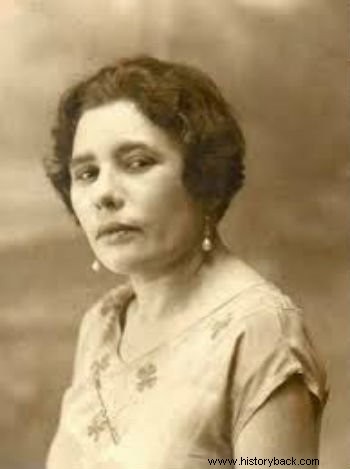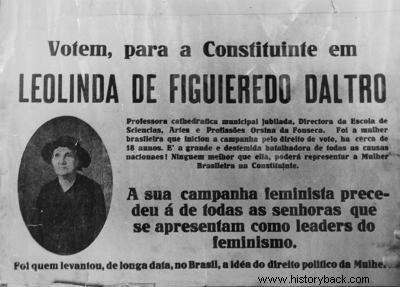The female vote in Brazil it was conquered in 1932 and incorporated into the 1934 Constitution as optional.
Only the Electoral Code of 1965 equated the female vote with that of men.
Origins
Empire – Second Reign
The history of women's suffrage in Brazil begins when women begin to demand more rights in the public sphere.
The first time a woman voted in Brazil was in 1880. The pioneer was the dentist Isabel de Mattos Dillon, which took advantage of the introductions promoted by the Saraiva Law into Brazilian legislation.
This law, from 1880, said that every Brazilian with a scientific title could vote. For this reason, Isabel Dillon used this loophole to exercise her right requesting her inclusion in the list of voters in Rio Grande do Sul.
First Republic

Celina Guimarães Viana, the second woman to vote in Brazil.
The Republic, however, did not extend the right to vote to women. It only said that "citizens over 21" could vote. Of course this excluded women back then.
The 1891 Constitution, however, said nothing about the creation of an exclusively female political party. In this way, in 1910, the Women's Republican Party emerged, founded by professor Leolinda de Figueiredo Daltro.
Inspired by the suffragettes In English, the PRF organized marches, fought for work-oriented education and pressured the government to grant it the right to vote.
In 1919, Senator Justo Chermont (PA) presented the first bill on the female vote. Through the Brazilian Federation for Feminine Progress, led by Bertha Lutz , the women made a petition that collected 2,000 signatures in order to pressure the Senate to pass the law. However, the project is forgotten for years in the drawers of parliamentarians.
It is important to highlight that during the First Republic, Brazil was extremely federalized and the competence to legislate on electoral matters belonged to the states.
So in 1927, the state of Rio Grande do Norte allowed women to vote. Therefore, teacher Celina Guimarães Viana , in Mossoró, requested and was accepted as a voter.
Following her example, fifteen other women signed up and voted in this election. Subsequently, these women's votes were revoked by the Senate Verification Commission on the grounds that the state could not have authorized the female vote whose law was still the subject of debate in the Senate.
Also in Lages/RN, in 1929, the first female mayor of Brazil, Alzira Soriano Teixeira, was elected with 60% of the votes. . If there was any law that prevented them from voting, there was no law that prevented them from running.
Despite having lost her mandate with the Revolution of 30, she would return to politics with the redemocratization of 1945 and would be elected councilor twice in a row.
Electoral Code of 1932 &Constitution of 1934

Leolinda de Figueiredo Daltro's 1933 election campaign pamphlet.
With the elaboration of the first Electoral Code in Brazil, in 1932, there was the creation of the Electoral Justice, of standardized elections and mandatory, secret and universal voting, including women.
With this, in the legislative elections of 1933, Brazilian women were able to vote and be voted on for the first time. In these elections, the first federal deputy in the country was also chosen, the doctor from São Paulo Carlota de Queirós.
Incorporated into the 1934 Constitution, the female vote was extended to single women and widows who performed paid work. Married women should be authorized by their husbands to vote.
The following year, the Electoral Code of 1935 made it mandatory for women who had paid activities to vote.
For those who did not receive a salary, however, voting was considered optional. This situation would be modified with the Electoral Code of 1965 that equalized the feminine vote to the masculine one.
Read more about the Brazilian Constitutions.
Curiosities
- The first head of state of independent Brazil was a woman:Empress Leopoldina.
- Princess Isabel is considered the first senator of Brazil, as the royal princes were entitled to a seat in the Senate.
- The Senate, however, would only have its first parliamentarians elected by universal vote in 1990 with Júnia Marise (Minas Gerais) and Marluce Pinto (Roraima).
- In 1994, Maranhão chooses by vote Roseana Sarney as the first woman to head a state.
- In 2010, Dilma Rousseff becomes the first woman to be president of Brazil.
Read more
- Feminism in Brazil
- Democracy in Brazil
- Extraordinary Women Who Made History
- Women who made the history of Brazil
- Era Vargas
- Getúlio Vargas
- Femicide
- Inspiring black women
